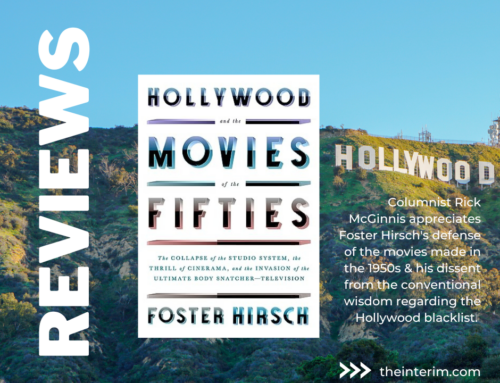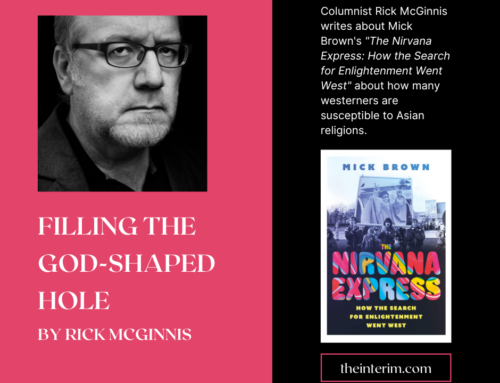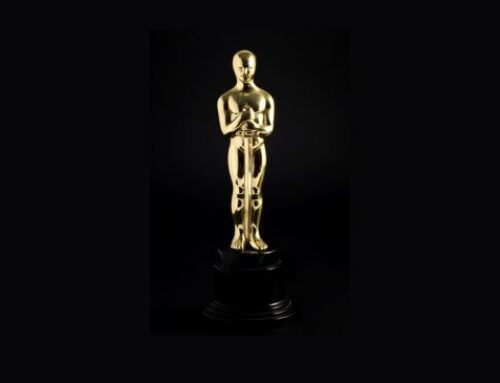 Glamour is a misunderstood word, whose meaning – like similar superlatives such as elite, exclusive, luxury and unique – has been adulterated and weakened, mostly thanks to its overuse by marketers and the media. But unlike those other words, so beloved of lifestyle journalists, realtors and advertising copywriters, glamour is a word that can be evocative and even profound, as writer Virginia Postrel explains in her new book The Power of Glamour.
Glamour is a misunderstood word, whose meaning – like similar superlatives such as elite, exclusive, luxury and unique – has been adulterated and weakened, mostly thanks to its overuse by marketers and the media. But unlike those other words, so beloved of lifestyle journalists, realtors and advertising copywriters, glamour is a word that can be evocative and even profound, as writer Virginia Postrel explains in her new book The Power of Glamour.
Subtitled “Longing and the Art of Visual Persuasion,” Postrel’s book is slightly oversized and copiously illustrated – a sort of coffee table entry in that currently popular genre of nonfiction books written by people like Malcolm Gladwell, or devoted to the history of cod fishing or salt. These books try to explain an idea or a discrete facet of history, but Postrel’s book needs illustrations as her thesis pivots on the idea that glamour impresses itself on our minds visually – through movies and TV and especially through photography, where a picture of life lived glamourously can be distilled to a single image and cheaply reproduced.
Postrel uses two anecdotes to demonstrate the immense power glamour has, particularly in the minds of the young. Growing up in China in the ‘70s, Yiyun Li prized a gold and silver-striped candy wrapper that, held in front of her eyes, made her see “a gilded world, much fancier than our everyday, dull life.” The candy wrapper came from America, and it was the seed of a longing that saw her escape China for an American graduate school and, eventually, a career as a novelist.
Michaela DePrince’s story is even more remarkable. An orphan in Sierra Leone, she found a discarded magazine that contained a picture of a ballerina in her tutu and point shoes. It “represented freedom, it represented hope, it represented trying to live a little longer,” she recalled later. The little girl tore the picture out and hid it in her underwear. Adopted by an American couple, she began studying dance, and in 2012 joined the Dance Theatre of Harlem as a ballerina.
“I was so determined to be like that person on the magazine,” she said.
The most powerful moment of the Renewal of Baptism Promises – a ritual Catholics are supposed to recite annually – is the vow to “reject the glamour of evil, and refuse to be mastered by sin.” I don’t think I’m alone in finding the acknowledgment that evil has its glamourous side the most profound part of the ceremony. The word is doubtless used in its original sense as handed down from the Scots, evoking bewitching and enchantment, but its more modern meaning pulls the mind from the litany and forces you to imagine evil garbed in the gowns and sunsets and cool light and all the seductive modernity the word has come to invoke today.
Postrel doesn’t imbue glamour with a moral dimension. Glamour, as she describes it, is ephemeral and fleeting – a consensual illusion that relies on coolness and mystery to thrive, quite the opposite of charisma, which she posits as glamour’s antithesis. Politicians can have one or the other, but not both, and if they can’t replace one with the other when their original quality flees, they’re in big trouble – Barack Obama, the epitome of political glamour not long ago, is cited as an example, suddenly shorn of his glamour as his second term begins, cruelly revealed to be wholly charisma-free.
The book traces glamour’s evolution in history, reaching as far back as Alexander the Great, but tells us that glamour only became a cultural commodity when social mobility became widespread in the last two centuries. Glamour came into its own in the last century, between the two world wars, when modernity became a political, cultural and social ideal, and movie stars living in art deco homes, traveling on planes and presenting themselves to the world with apparent grace and effortlessness defined celebrity.
It was around this time that liberals and the progressive agenda stole a march on their opponents by cloaking their message and goals in the glamour of the modern. Gleaming white bathrooms were glimpsed in movies starring Joan Crawford and Ginger Rogers, and so homes built after World War Two had to feature multiple bathrooms, outfitted in porcelain and chrome. Hollywood sold divorce, as blithely practiced by the rich and beautiful, as a modern, glamourous thing, and subsequently divorce rates skyrocketed.
The Oz-like, skyscraper-studded cities of the future weren’t going to spring up haphazardly, like the crowded old cities of Europe and Asia, so planning suddenly became glamourous. “In its glamourous depiction of the future,” Postrel writes, “all groups worked together in harmony, and individual and collective plans exactly coincided.” To work, therefore, not just streets and neighbourhoods had to be planned, but the customs and lifestyles of the people who lived in them, and not surprisingly all this desperately cherished modernity gave us, among other things, Planned Parenthood.
Postrel, a libertarian, doesn’t try to paint glamour or modernity as evil, and it would be foolish to suggest that they are. After all, the litany doesn’t talk about the “evil of glamour” but the “glamour of evil.” Evil, I would suggest, flowers when we forget that glamour is an illusion, stage-managed on one end by professionals and embraced on the other by people who know better but surrender momentarily to longing, desperate for motivation or escape – or both. Just as you can’t find the modern world on a calendar, real life isn’t glamourous, and evil only thrives when we try to will or even legislate the illusions we imagine in glamour into real things.




